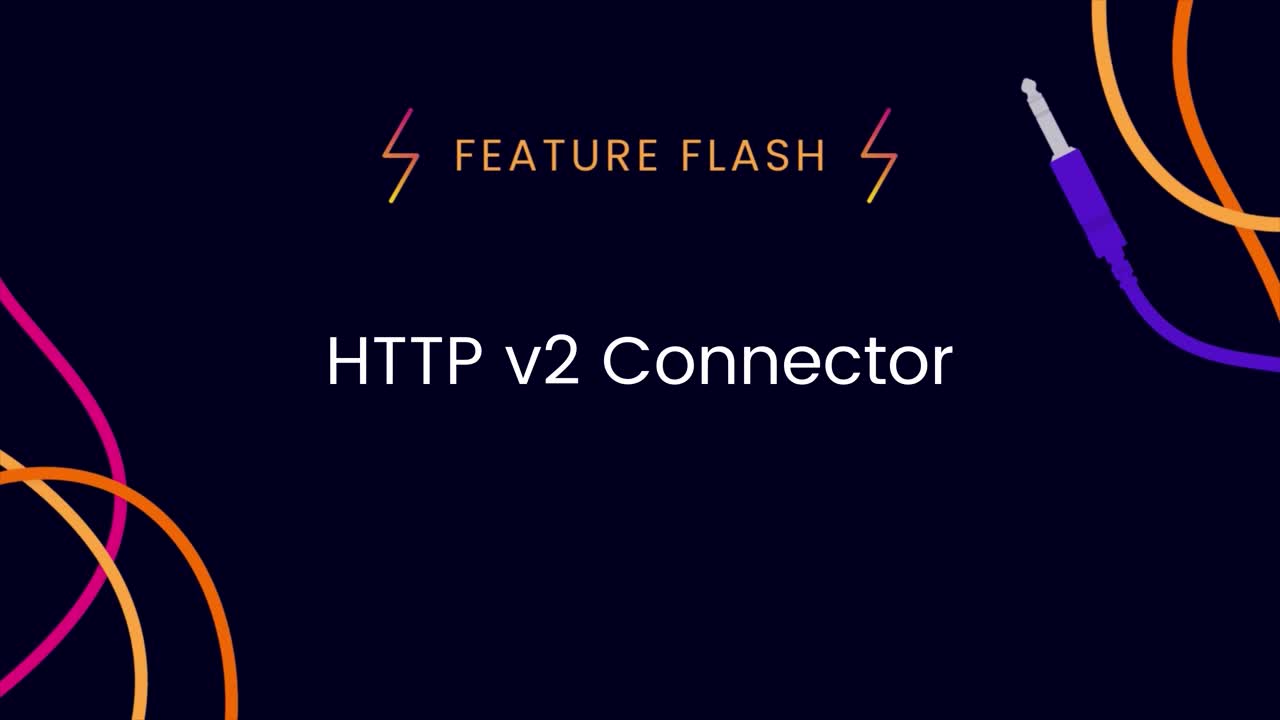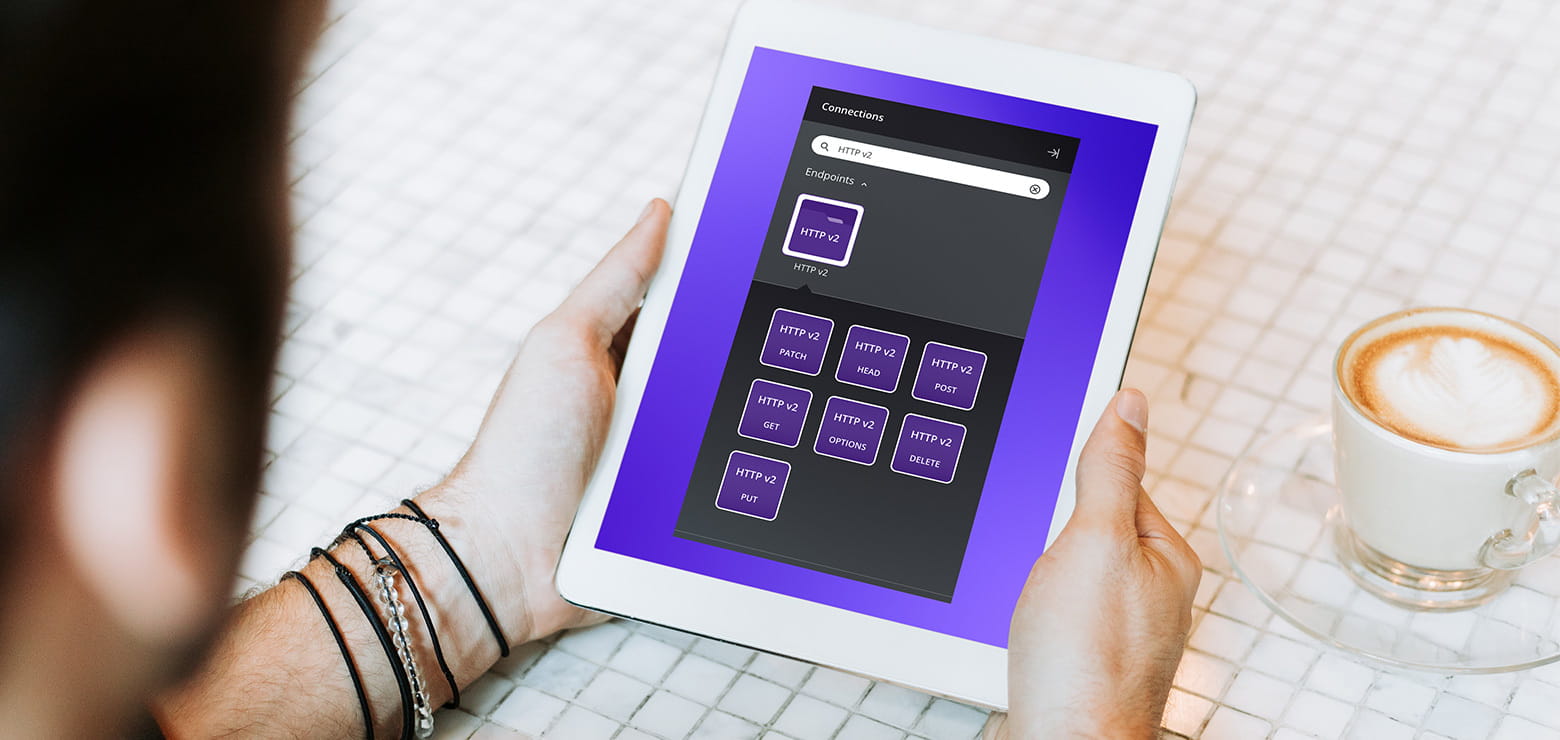By Will Clifford, Senior Product Manager
Celebrating the launch of Jitterbit’s new HTTP V2 connector with tips, benefits, and an exclusive first look.
As the number of business applications in the market continues to increase, so do the opportunities to streamline and automate workflows between them.
While Jitterbit continues to focus on building new connectors aligned with the needs of our customers, the rapid emergence of new technologies inevitably outpaces our connector offerings in Harmony. This is precisely where the HTTP connector takes centerstage.
With more than 5,000 deployments in the past year alone, the HTTP connector is a mainstay among our customers, seamlessly integrating a diverse array of technologies and positioning our Harmony iPaaS at the core of their dynamic technology ecosystem.
What is an HTTP connector? How does it work?
An HTTP connector serves as a crucial digital bridge, facilitating communication between different systems through the Hypertext Transfer Protocol (HTTP). It simplifies the process of interacting between endpoints or applications, making it quicker and more straightforward to set up and design integrations.
Jitterbit’s HTTP connector serves as a versatile interface, facilitating fast and seamless authentication with any application’s API. While Jitterbit boasts an extensive repertoire of more than 200 connectors for today’s popular platforms, you may encounter tools specific to your organization that lack a prebuilt connector. The HTTP connector bridges this gap, allowing you to integrate with any system in your tech stack.
Using the HTTP connector is a straightforward process; simply choose your authorization type and the necessary fields for authentication, which are typically outlined in the initial sections of the application’s API documentation. Once your connection is established and validated, you can employ a range of methods – PATCH, HEAD, POST, GET, OPTIONS, DELETE, PUT – to interact with the API and its endpoints.
👉 For comprehensive details about Jitterbit’s HTTP connector, refer to our documentation here!
5 key enhancements in Jitterbit’s HTTP V2 connector
In our latest product release, available as of January 10, 2024, the HTTP V2 connector has transitioned from its beta phase to general availability, offering an upgraded integration experience.
There are five key enhancements we’ve made to the HTTP V2 connector to make it even easier to streamline your integration workflows:
-
Supports common authentication types:
The HTTP V2 now natively supports the following authentication types:
- API Key
- AWS Signature
- Basic Auth
- Bearer Token
- Digest Auth
- Hawk Authentication
- OAuth 2.0
-
Supports OAuth 2.0 client credentials flow:
One of the most modern and secure methods of authentication, Client Credentials, is now directly supported within the HTTP V2 connector.
-
Reduces scripting for the connection:
With the addition of common authentication types directly in the connection settings, scripting for authentication, such as OAuth 2.0, is no longer required.
-
Supports native multipart payload:
When using multipart data as a content-type, the request transformation schema will automatically be created.
-
Simplifies troubleshooting:
With the reduced scripting, troubleshooting becomes more straightforward, so you can connect to your desired application’s API with fewer steps.
How does Jitterbit’s HTTP V2 connector accelerate automation?
As with any business process, speed, optimization, and efficiency within your integration workflows is critical for success. Streamlining steps and operations not only enhances integration efficiency, but also mitigates potential points of failure, helping you achieve peak optimization in your integration projects.
Beyond the streamlined processes, the upgraded version offers an added layer of security by updating your authentication to OAuth 2.0 and providing a proactive approach to safeguarding sensitive data. With HTTP V2, you can connect to all your business’s pivotal application APIs more efficiently than ever before to accelerate automation across the enterprise.
How to use the HTTP V2 connector (and see it in action!)
In order to take full advantage of the benefits of HTTP V2, such as OAuth or AWS authentication, you may want to update your existing integration projects.
The following steps document the process of upgrading an existing project from using the HTTP V1 connector to the HTTP V2 connector. Please note that these steps may change slightly depending on your particular project.
In this example, we’re upgrading a project using HTTP V1 as a source with a response transformation, as the HTTP V2 connector uses the transformation validation pattern.

Step by step:
- Open the same project in two browser tabs
- On the original tab, open the connection details of the HTTP V1 connector.
- On the new tab, search for and select the HTTP V2 connector.
- Configure the HTTP V2 connection details page, referencing information from the HTTP V1 connection.
- For example, if using Basic Authentication, copy the Base URL, Username, and Password from HTTP V1 into the HTTP V2 connection details.
- Make sure to check the Optional Settings as well.
- Once populated, click Test to validate them and then click Save Changes.
- Find the HTTP V2 activity matching the activity used by the HTTP V1 connector, and add it to the operation to the right of the HTTP V1 endpoint.
- Copy the HTTP V1 endpoint details, including the Path and any other relevant details to the new HTTP V2 endpoint.
- Open the response Transformation and update the schema of the Source to match the schema of the Target.
- Remove the HTTP V1 endpoint and update the HTTP V2 endpoint name accordingly.
- Deploy the operation that has now been upgraded to use the HTTP V2 connector.







